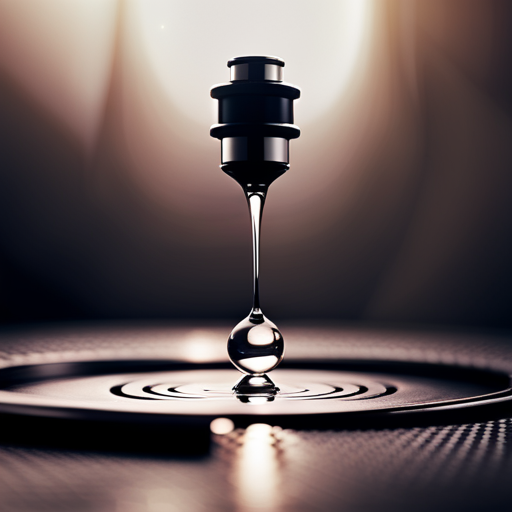Are you concerned about potential PFAS contamination in your drinking water? You’re not alone. PFAS, or per- and polyfluoroalkyl substances, are a group of man-made chemicals that can be found in various household products and have been linked to health problems such as cancer, thyroid disease, and decreased fertility. These chemicals can also accumulate in the body over time, making it even more crucial to remove them from your drinking water.
Fortunately, there is a solution: distillation. According to the Environmental Protection Agency (EPA), distillation is the most effective method for removing PFAS from drinking water. Distillation involves heating water to create steam, which is then condensed back into liquid form, leaving behind any contaminants.
While there are other methods available, such as reverse osmosis and activated carbon filtration, distillation has been found to be the most effective in removing PFAS. In this article, we will explore the benefits and limitations of using distillation as a solution for removing PFAS from your drinking water.
Key Takeaways
– PFAS contamination is a growing concern for homeowners across the country, and even low levels of exposure can be harmful as they can build up in the body over time.
– Distillation is recognized by the EPA as the most effective way to remove PFAS from drinking water, and can also eliminate other harmful chemicals and viruses.
– While distillation treatment units can remove a significant amount of harmful chemicals from drinking water, the operating costs and purchase prices can be high, making it a costly investment.
– It’s important to monitor the PFAS levels in your local drinking water and take appropriate action if necessary, such as installing a distillation treatment unit to remove PFAS from your drinking water.
PFAS Contamination Concerns
You may be worried about PFAS contamination as it’s a growing concern for homeowners across the country. These chemicals are found in non-stick cookware, food packaging, and stain-resistant fabrics, and they’re linked to health problems. Even low levels of exposure to PFAS can be harmful, as they can build up in the body over time.
PFAS are very stable and don’t break down easily in the environment, which makes them a persistent problem. They enter the environment through manufacturing, product use, and wastewater discharge and can enter drinking water through leaching from landfills, sewage sludge, or biosolids.
The health effects of PFAS contamination aren’t the only concern. The environmental impact is also significant. PFAS can accumulate in soil and water, and once they enter the environment, they can remain there for a long time. This means that they can affect wildlife and ecosystems for years to come.
Additionally, the cost of cleaning up PFAS contamination can be high, which can be a burden for homeowners and local governments. As a result, finding effective solutions for removing PFAS from the environment and drinking water is critical.
Distillation as a Solution
Using a distillation treatment unit can remove a significant amount of harmful chemicals from your drinking water, including PFAS. This method heats the water to boiling point, collecting the vapor and leaving behind contaminants.
Not only is distillation recognized by the EPA as the most effective way to remove PFAS from drinking water, but it can also eliminate lead, arsenic, fluoride, and viruses.
While the benefits of distillation are clear, it’s important to note that there are some drawbacks to using this method. Operating costs and purchase prices for distillation treatment units can be high, making it a costly investment. Additionally, regular maintenance is required for proper operation, which can add to the overall cost.
However, for those concerned about the health risks associated with PFAS and other contaminants in drinking water, distillation is a highly effective solution.
PFAS Levels and Regulations
Regulations and advisory levels for PFAS in drinking water vary by state and the EPA, with some states setting stricter standards than others. The EPA has set a drinking water advisory level for two types of PFAS, but these levels aren’t enforceable standards. They’re merely levels at which the EPA believes there’s a risk to human health.
Several states have established more stringent standards for PFAS levels in drinking water to protect their residents from potential health risks. While there’s no nationwide standard for PFAS regulation, some states have taken action to protect their citizens from PFAS exposure.
For example, New Hampshire has set a maximum contaminant level (MCL) of 12 ppt for one type of PFAS, while Vermont has set standards for six types of PFAS in drinking water. It’s important to monitor the PFAS levels in your local drinking water and take appropriate action if necessary, such as installing a distillation treatment unit to remove PFAS from your drinking water.
Conclusion
Now that you understand the dangers of PFAS contamination and the benefits of distillation as a solution, it’s time to take action to protect yourself and your family.
The first step is to test your drinking water for PFAS levels, especially if you live near an industrial area or military base.
If PFAS is detected, consider investing in a distillation system for your home. While this may be a more expensive option than other filtration methods, it is the most effective solution for removing PFAS from drinking water.
Remember that PFAS is a serious health concern and should not be taken lightly. By taking proactive steps to protect your water supply, you can ensure that you and your loved ones are safe from the harmful effects of these chemicals.
Don’t wait until it’s too late – start researching distillation systems today and take control of the quality of your drinking water.
